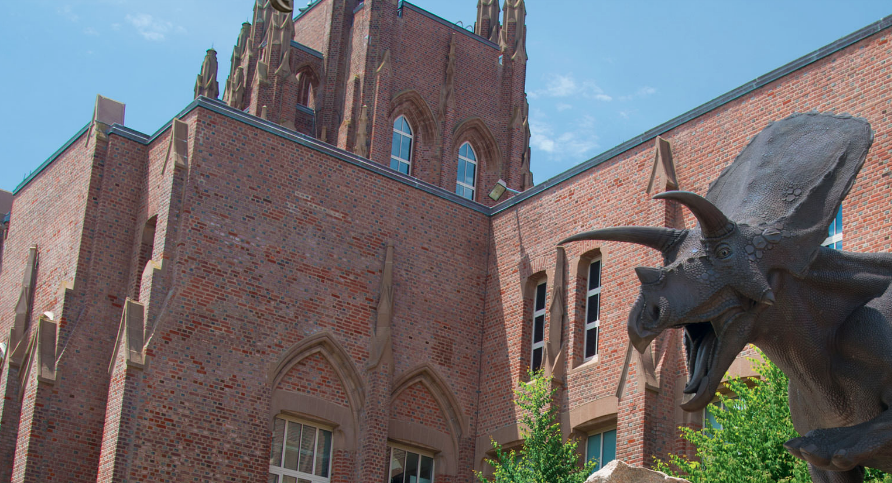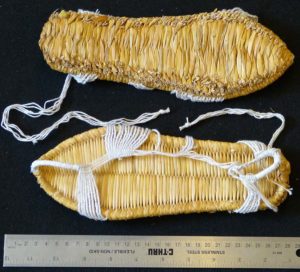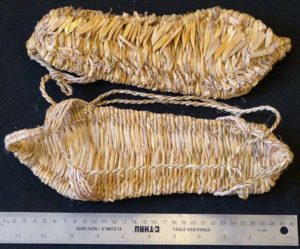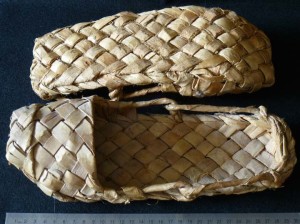I am happy to announce that the woven footwear collection of the Straw Sandals Project has been gifted to the Peabody Museum of Natural History at Yale University. This collection will be added to the Anthropology Collections as the Lawrence Hightower Collection of ethnographic, ethnohistorical and ancient footwear.
Professor Anne Underhill, chair of the Yale Anthropology Department and Professor Roderick J. McIntosh, Curator of Anthropology at the Peabody Museum, visited the University of Connecticut in mid-September, 2019 to view the collection. They were impressed by the breadth of the collection and by the detailed notes that accompanied each item of footwear. Roderick McIntosh formally accepted the collection on behalf of the curators of the Anthropology Division on November 21, 2019. The Senior Collections Manager Roger Colten transported the collection to New Haven, CT, several months later.
The Peabody Museum is currently closed while undergoing a major renovation over the next two years that will double the exhibit space. Once the museum re-opens, the footwear collection will be available for use by scholars and Yale undergraduates for projects. It is my hope that items from the collection will be included in future exhibits especially one pairing the woven footwear version of cultural evolution with the human migration story.
I am indebted to many friends and colleagues who contributed woven footwear during their travels and especially to Ruixing Lu who collected for me in Wuxi and other parts of China, my daughter Leigh Moyers who collected in Japan, Michael Lynes who collected in Nepal, Robert M. and Nicole Tanguay who contributed Moroccan sandals, Nicholas Arisco who collected in Madagascar and to the late Donna Sakamoto Crispin, a wonderful fiber artist whose handicraft is included in the Yale collection. I wish to thank Helen Neumann for helping me characterize and organize the footwear as part of the Straw Sandals Project at the University of Connecticut and also Allison Hillmon who wrote about the collection and who re-photographed the entire collection to improve its visibility. Nicholas Arisco brought macro lens photography to the analysis of the collection. Pierre Goloubinoff who along with his daughter collected hard to find footwear in Northern India and two photographic models, Virginia Lee and Kousanne Chheda, made valuable contributions, as did artists and illustrators Francesca Holland along with Zanna Aristarhova, and also Phil and Libby Hooper during trips to Russia and Lea Sistonen from Finland. And finally, thanks to by longtime friend and colleague Professor Barry G. Hall who created software that allowed us to study and classify the collection based on weaving methods and sandal construction techniques. – Larry Hightower












